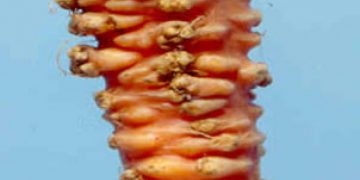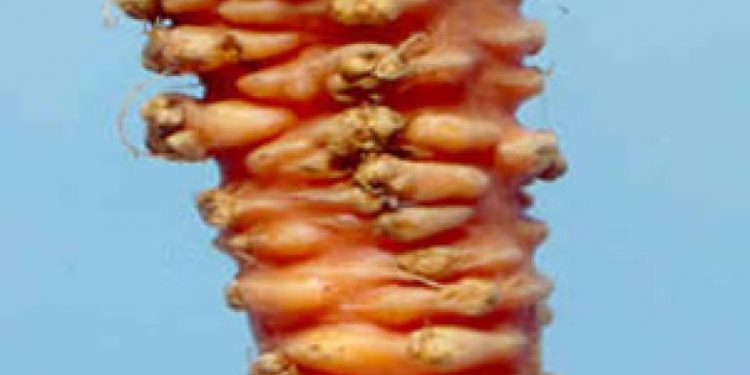At present more than 90 species of root-knot nematode have been described. All are obligate endoparasitic pests on plant
roots and they are detected worldwide. About 10 species are agricultural pests, while five (Meloidogyne arenaria,
Meloidogyne enterolobii, Meloidogyne hapla, Meloidogyne incognita, Meloidogyne javanica) are major pests and are
distributed worldwide in agricultural areas. The temperate root-knot nematodes Meloidogyne chitwoodi and Meloidogyne fallax parasitize monocotyledons and dicotyledons, including several crop plants such as potatoes, carrots and tomatoes.
The juveniles of the second stage are attracted to the roots and penetrate the roots closely behind the root tip, where they
enter the vascular cylinder. The parasites finally start feeding on cells, which are rapidly turned into multinucleated giant
cells. At the same time as the giant cells are formed, the cells of the neighbouring pericycle start to divide, giving rise to a
typical gall or root knot. The root-knot nematodes are able to move only a few metres annually on their own, but they can
be spread readily through the transport of infested plants and plant products, in soil, adhering to farm implements and in
irrigation water. Root-knot nematodes affect the root growth, yield and quality of their hosts. The above-ground symptoms are
not readily apparent, but they may consist of various degrees of stunting, lack of vigour and wilting under moisture stress. Hosts may be heavily infested without showing external symptoms on the harvested products, for example symptomless potato tubers. Meloidogyne chitwoodi was described from the Pacific Northwest region of the USA in 1980.
At present this species has been recorded from Argentina, Belgium, France, Germany, the Netherlands, Portugal, the USA, Mexico and South Africa. Meloidogyne fallax was detected for the first time in 1992 in a field plot experiment 1 mile north of Baexem (NL) and was initially remarked as a deviating M. chitwoodi population. Within Europe this species has been recorded from Belgium, France, Germany, the UK and Switzerland. It has so far been detected outside Europe in New
Zealand, Australia and South Africa. Updated information on distribution is available in the EPPO Global Database (https://gd.eppo.int/).
Above-ground symptoms of heavily infested plants include stunting and yellowing, while below ground galling is typical. Pictures of other affected crops are available in the EPPO Global Database (https://gd.eppo.int/). The root galls produced by
M. chitwoodi and M. fallax are comparable to those produced by several other root-knot species, i.e. relatively small galls in general without secondary roots emerging from them (as in M. hapla). On potato tubers, M. chitwoodi and M. fallax cause numerous small pimple-like raised areas on the surface (in M. hapla these swellings are not evident). Some potato cultivars, although heavily infested, may be free from visible external symptoms, while the internal potato tissue is necrotic and brownish, just below the peel.
Photo: EPPO (2024) EPPO Global Database. https://gd.eppo.int
Reference: EPPO (2016), PM 7/41 (3) Meloidogyne chitwoodi and Meloidogyne fallax. EPPO Bull, 46: 171-189. https://doi.org/10.1111/epp.12292































